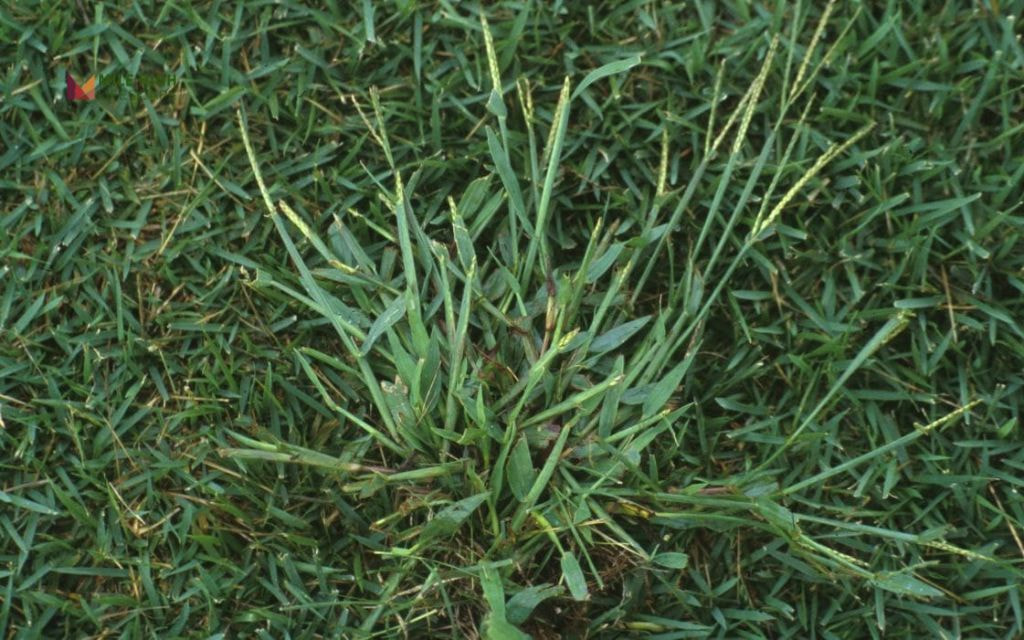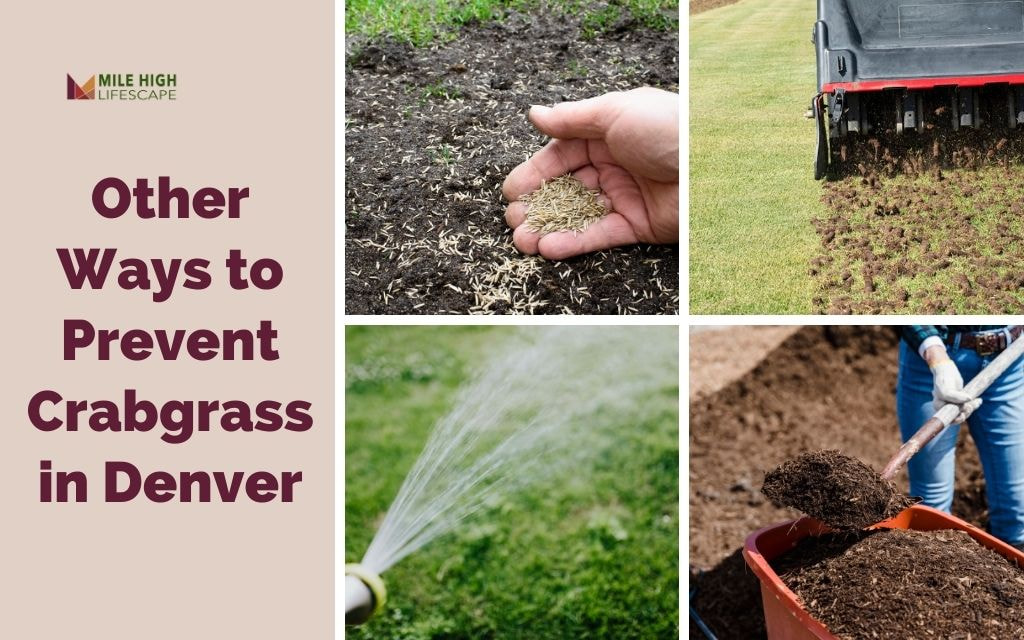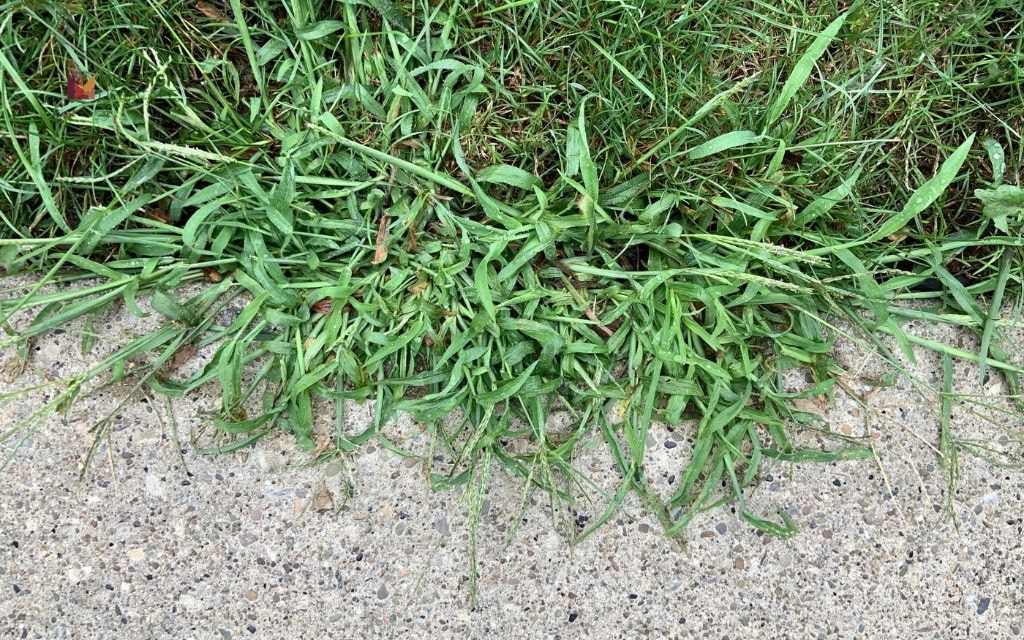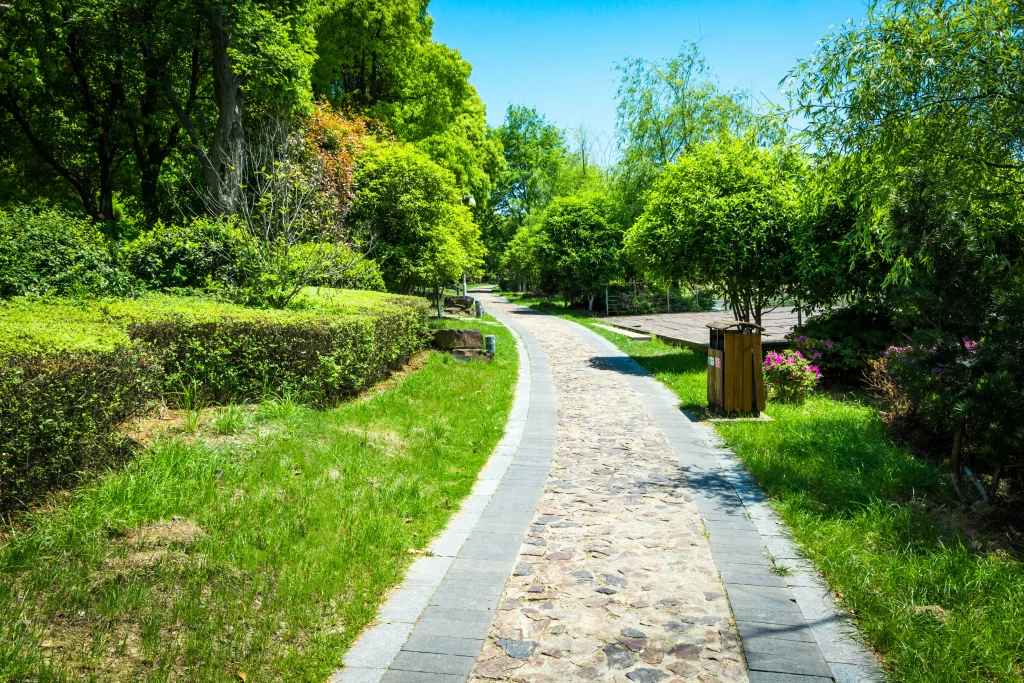Wondering “how do I get rid of crabgrass in the summer?” You’re not alone! The answer lies in a combination of targeted treatments, proper lawn care practices, and timing.
Crabgrass is a warm-season annual weed that invades lawns during summer heat. It spreads rapidly, creating unsightly patches throughout your yard. Denver’s climate presents unique challenges for crabgrass control.
Our cool-season grasses like Kentucky bluegrass and fescue often struggle during hot summer months, creating opportunities for crabgrass to thrive. Add our unpredictable weather patterns with sudden temperature shifts, and you have perfect conditions for these persistent weeds.
In this expert guide, you’ll learn the 9 best, actionable tips for crabgrass prevention and elimination in Denver’s unique climate – including practical strategies and professional help when you need it most.
Identifying Crabgrass in Your Lawn
Spotting crabgrass early prevents extensive lawn damage and makes removal more manageable.
Look for these telltale signs:
- Crabgrass appears light green, standing out against your darker lawn grass.
- Crabgrass grows in distinctive patches with broad, irregular blades that spread outward from a central point.
- Crabgrass typically establish in thin or damaged areas where your regular grass struggles, especially spots with direct sunlight or drought stress.
- Unlike regular lawn grass that grows upright, crabgrass grows low to the ground in a star-like pattern.
- The blades feel coarse compared to your lawn grass, and during summer, crabgrass produces seed heads that resemble tiny fingers reaching upward.
Many Denver homeowners confuse crabgrass with gooseneck loosestrife or dandelions. The key difference lies in crabgrass’s spreading growth habit and texture.
While dandelions grow as individual plants with distinct leaves, crabgrass forms interconnected patches that expand outward, gradually taking over larger lawn areas.

How Do I Get Rid Of Crabgrass In The Summer in Denver
Denver’s unique climate and soil conditions require specific approaches to crabgrass control. Here are proven methods to eliminate this persistent weed:
#1: Apply a Pre-Emergent Herbicide
Prevention works best in early spring before crabgrass germinates. Apply a pre-emergent herbicide containing prodiamine or pendimethalin when soil temperatures reach about 55°F for 3-5 consecutive days. In Denver, this typically occurs between early April and mid-May.
Pre-emergent creates a barrier that prevents crabgrass seeds from developing. Water your lawn lightly after application to activate the herbicide.
Avoid using pre-emergents in areas where you plan to seed your lawn, as these products prevent all seeds from germinating, including grass seed.
#2: Pull It Out by Hand
For smaller crabgrass invasions, manual removal works effectively. The key to success lies in removing the entire plant, including roots.
Water your lawn before pulling to soften the soil and make extraction easier. Grasp the crabgrass close to the ground and pull steadily to remove the entire root system.
This method works best in the morning or after rainfall when soil moisture levels are higher.
#3: Use a Selective Weed Killer
When crabgrass establishes beyond manual removal, selective herbicides offer targeted control. Products containing quinclorac or fenoxaprop specifically target crabgrass while sparing your lawn grass. Apply when crabgrass actively grows, typically in early summer.
For best results, apply on a calm, dry day when temperatures range between 65-85°F. Avoid application before rain or irrigation, as this reduces effectiveness. Some products require multiple applications spaced 7-14 days apart for complete control.
#4: Take Care of Your Lawn
A dense, healthy lawn naturally resists crabgrass invasion. Maintain proper mowing height – keep cool-season Denver grasses at 2.5 to 3 inches during summer.
This height shades the soil, preventing crabgrass seed germination. Establish regular fertilization schedules that strengthen your lawn grass, enabling it to outcompete weeds.
Water deeply but less frequently to encourage deep root growth. Aim for 1 to 1.5 inches of water weekly, adjusting for rainfall. Early morning watering minimizes evaporation and reduces disease potential.
#5: Boiling Water Treatment
For isolated crabgrass patches, especially in non-lawn areas like sidewalk cracks or garden edges, boiling water provides a chemical-free solution. Simply pour boiling water directly onto crabgrass plants. The heat immediately destroys plant tissues, killing the weed.
Use this method carefully, as boiling water kills all vegetation it contacts. Reserve this approach for areas where precision is possible and collateral damage to desired plants isn’t a concern.

Other Ways to Prevent Crabgrass in Denver
Prevention creates the foundation for a crabgrass-free lawn. These strategies work particularly well for Denver’s climate:
#6: Overseed Your Lawn
Fall overseeding with cool-season grasses fills bare spots where crabgrass typically establishes.
In Denver’s climate, late August through September provides ideal conditions for new grass establishment. Select grass varieties suited to Colorado’s conditions, such as tall fescue or Kentucky bluegrass blends with drought tolerance.
Before overseeding, core aerate your lawn to improve seed-to-soil contact and reduce compaction.
Apply seed at recommended rates, then keep the seedbed consistently moist until germination. The resulting denser lawn naturally suppresses crabgrass through competition for light, water, and nutrients.
#7: Aerate Your Lawn
Core aeration reduces soil compaction that weakens lawns and favors crabgrass. By removing small soil plugs, this process improves oxygen flow, water penetration, and nutrient absorption. Denver’s clay-heavy soils particularly benefit from annual aeration.
Schedule aeration during fall when cool-season grasses actively grow. This timing allows your lawn to recover quickly while preparing it to resist next year’s crabgrass invasion.
Consider professional aeration services from Mile High Lifescape for optimal results with commercial-grade equipment.
#8: Water the Right Way
Strategic watering develops grass root systems that outcompete crabgrass. Deep, infrequent irrigation trains grass roots to grow deeper, increasing drought tolerance.
Apply 1 to 1.5 inches of water weekly in one or two sessions rather than daily light sprinkling.
Install a rain gauge or smart irrigation controller to measure water application accurately. Water early morning (5-9 am) to minimize evaporation while reducing disease potential associated with evening watering. During Denver’s monsoon season, adjust irrigation schedules to account for natural rainfall.
#9: Cover Ground to Keep Weeds Away
In garden beds and non-lawn areas, physical barriers prevent crabgrass establishment. Apply 2-3 inches of mulch around plants to block sunlight from reaching weed seeds.
For pathways or under decks, landscape fabric provides long-term weed suppression when properly installed and maintained.
Select appropriate mulch types for Denver’s climate – wood chips perform well in most landscapes, while rock mulch suits xeric gardens. Refresh mulch annually to maintain effective weed suppression thickness.

Common Mistakes to Avoid When Dealing with Crabgrass
Even with the best intentions, certain approaches can undermine your crabgrass control efforts.
Avoid these common pitfalls:
- Ignoring early prevention: This is the most frequent mistake. Once crabgrass establishes and produces seeds by late summer, you face potentially years of recurrent problems. Each plant produces thousands of seeds that remain viable in soil for up to three years. Commit to pre-emergent application each spring for effective management.
- Overusing herbicides damages your lawn ecosystem and potentially contaminates water supplies. Follow product instructions precisely regarding application rates and timing.
- Mowing too short stresses cool-season grasses while creating ideal conditions for crabgrass. Denver lawns thrive when maintained at 2.5 to 3 inches during summer.
- Improper watering practices, particularly frequent shallow irrigation, encourage crabgrass while weakening desired grasses. Train your lawn toward drought tolerance through proper watering, which naturally disadvantages shallow-rooted weeds like crabgrass.

Let Mile High Lifescape Help You
Battling crabgrass summer after summer? At Mile High Lifescape, our trusted Denver team has the local experience to tackle crabgrass – so you can enjoy a thick, weed-free lawn all season.
- Crabgrass Prevention & Treatment: Expert application of professional-grade pre- and post-emergent herbicides.
- Lawn Aeration & Overseeding: Restore soil health, crowd out weeds, and help your cool-season grass dominate.
- Fertilization & Weed Control Packages: Regular services for resilient, weed-resistant lawns.
- Comprehensive Lawn Care: Tailored plans for beautiful, low-maintenance yards in Denver’s unique climate.
Let Mile High Lifescape take the hassle out of crabgrass control! Contact us today to schedule a free consultation and reclaim your lawn this summer.
Conclusion
Crabgrass control in Denver requires a proactive, season-long approach. Early prevention through pre-emergent herbicides, combined with proper cultural practices like correct mowing height and strategic watering, creates a lawn environment where crabgrass struggles to establish.
Once summer arrives, quick identification and targeted treatment of breakthrough weeds prevent widespread invasion. Remember that Denver’s challenging climate makes professional expertise particularly valuable for consistent results.
Mile High Lifescape brings nearly two decades of Denver-specific lawn care experience to your property. Our customized programs address the unique challenges of controlling crabgrass in our region, delivering results that transform your lawn.
Contact us today for a free consultation and personalized crabgrass control plan. Let our expertise work for your lawn, giving you more time to enjoy summer instead of fighting weeds.
Frequently Asked Questions (FAQs)
How do you kill crabgrass in the summer without killing grass?
Use selective herbicides containing quinclorac or fenoxaprop that target crabgrass while sparing lawn grasses. Apply during morning hours when temperatures remain below 85°F for best results. For small patches, hand-pulling provides a chemical-free alternative. Ensure you remove the entire root system to prevent regrowth.
What do professionals use to get rid of crabgrass?
Professionals utilize commercial-grade selective herbicides with active ingredients like quinclorac, dithiopyr, or fenoxaprop. These products offer superior control with specialized surfactants that improve absorption. At Mile High Lifescape, we combine these treatments with cultural practices like aeration and proper mowing for comprehensive management.
Can you permanently get rid of crabgrass?
Yes, you can permanently eliminate crabgrass with persistent effort. Apply pre-emergent herbicides annually for 3-4 consecutive years to deplete the soil’s seed bank while maintaining thick, healthy turf through proper mowing and watering. This combination of chemical prevention and cultural practices creates conditions where crabgrass cannot establish, leading to permanent control on your Denver property.
What is the fastest way to get rid of crabgrass?
The fastest way to get rid of crabgrass is to apply a post-emergent herbicide containing quinclorac, which kills existing plants within 2-7 days. For immediate results on small patches, spot-treat with glyphosate or simply pull plants by hand when soil is moist. Each method balances speed against potential damage to surrounding grass.
Does mowing crabgrass spread it?
Yes, mowing crabgrass can spread it if the plants have already developed seed heads. The mower blades cut through the mature seed heads and scatter seeds across your lawn. However, regular mowing before seed production actually helps control crabgrass by preventing it from completing its reproductive cycle. To minimize spread, clean your mower after cutting infested areas and maintain proper mowing height for your Denver lawn.
